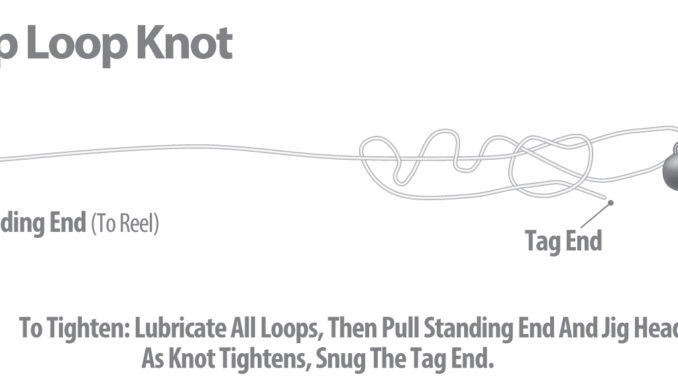
Capt. Rick Bennett ties a loop knot to secure his line to every lure or jighead he uses. He said the knot allows the lure to move in the most-natural way, and he believes it helps draw strikes. When tied properly, any of the several versions of the loop knot will not slip or cinch down on the eye of the hook or lure.
Gains in fishing are rarely made in leaps and bounds, but in small increments, and having a lure move more realistically is one of those small increments that helps entice wary fish to bite. Attaching the lure with a loop knot might not make a lot of difference when the bite is red hot, but it will help attract strikes when the fishing is slow; that’s when it is most important.
Some fishermen shy away from loop knots, believing they are weaker, but if tied correctly, the knot is just as strong as a clinch, improved clinch or Palomar knots. Several loop knots all work well: the MirrOlure Knot, Rapala Knot, Perfection Loop, Surgeon’s Loop and Non-Slip Loop. Each fisherman must find one he ties well and in which he has confidence.
Bennett prefers the Non-slip Loop Knot, which some fishermen call the “Kreh Knot” after Lefty Kreh, who is supposed to have developed it. This knot begins with an overhand knot and passes the tag end of the line back on itself three times without becoming noticeably large, and it doesn’t slip.





Be the first to comment